A majority of people leave the repair of their car tire sidewall to professionals. There is a reason to it, as some tire experts do not recommend that the owners try to fix the issue by themselves. The process of tire sidewall repair requires an expert as the sidewall has a different structure than the other parts of a tire.
The sidewall of a tire can move in different directions, which can cause some pressure on the other parts of the tire. If you try to fix the issue by yourself, there is a high chance of the tire exploding or breaking.
This time, we will reveal to you the four hacks for tire sidewall repair that can help you during emergencies.
Hacks That Can Help In Taking Care Of A Tire Sidewall Repair IssuesA tire sidewall issue can arise anytime, especially if you are driving down rough roads or in mountain terrain. At times, this issue can become a headache if you do not have the proper expertise to get you out from the situation. In such a scenario, make sure that you follow the hacks mentioned below:
The Boot is a large rubber piece placed inside a punctured tire that keeps the tube of the tire safe, but the entire tire needs to be removed. Also, there is a high chance that the boot might not last long and that can make the tire vulnerable to more damage. A good thing would be to replace the damaged tire with a new one, thus saving you from further issues. You can look for a reputed tire sidewall repair provider to get the best service.
SEE MORE:
A few shops claim to remove the rubber from inside the tire and place a stronger patch to keep the tire sidewall stronger. It is a long process and not preferred to be done by less experienced tire repair service providers. A reputed tire service shop with an excellent service record can help you get out of this with quality repair sidewall tire cut.
It is a long process and not preferred to be done by less experienced tire repair service providers. A reputed tire service shop with an excellent service record can help you get out of this with quality repair sidewall tire cut.
Duct tape can be carried around while traveling especially if the terrain is a rough one as the tire sidewall is most likely to be damaged. Applying a little thick layer over the affected area can help the riders to drive a little more. It cannot be used as a long-term solution as it will damage the tire permanently. You can refer to these vehicles maintenance tips to get it going for the longer run.
4. Rubber PatchOne of the most popular methods used by drivers includes using a small rubber patch with some glue to fix inside the tire. The patch is not a permanent solution to the problem. Hence, looking for a professional tire sidewall service provider can help you get out of this situation.
>> Are you looking for a second-hand car in good condition? Click here <<
The ConclusionHence, fixing the damaged tire sidewall will not be much of an issue if you know these hacks. These will ensure that you have a functional tire in case you get stuck somewhere. However, hiring the services of a reputed tire sidewall repair will help you in resolving the issue faster; thereby saving you both time and money.
No matter what sort of tire damage you’ve noticed on your car, sidewall damage, in particular, can be very troublesome.
Whether you’ve been in an accident or have suddenly noticed cracks in your sidewall, you may be wondering if it’s time to replace your tires or if you can rectify the damage with a repair. Keep reading below for everything you need to know!
Sidewall tire damage is any sort of cracking or splitting that occurs to the side of the tire. This damage can occur due to an accident, defect of aging, or even everyday wear. Sadly, this sort of damage cannot be repaired and is considered dangerous. Because sidewalls do not have steel cables, any sort of damage can quickly progress and be unsafe to drive on.
This damage can occur due to an accident, defect of aging, or even everyday wear. Sadly, this sort of damage cannot be repaired and is considered dangerous. Because sidewalls do not have steel cables, any sort of damage can quickly progress and be unsafe to drive on.
Keep reading below to learn how to prevent sidewall damage, why you shouldn’t attempt to patch it, and more!
You should never drive around with sidewall damage. While driving, the damage to your sidewall can quickly become worse. After the integrity of the tire has been compromised, things can go downhill rather quickly.
Plus, sidewall damage can also lead to blowouts. As you might imagine, this can cause damage to your vehicle, as well as put you and others in danger.
For the most part, there isn’t a level of sidewall damage that is okay. You never know when even a tiny problem will suddenly become severe and lead to a blowout. Even simple driving can make the wound much worse very quickly.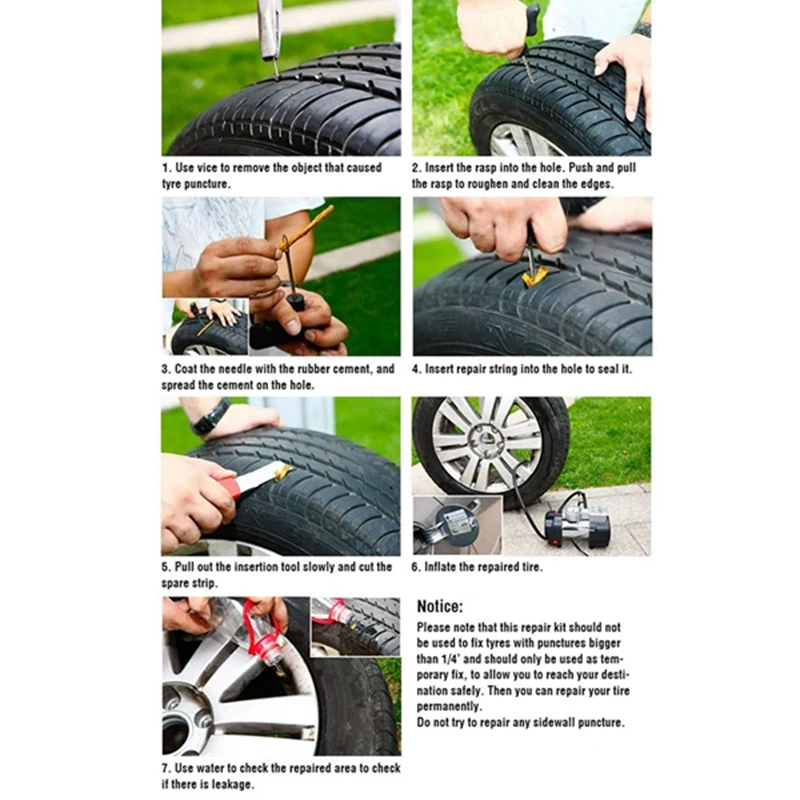
Furthermore, damage to your tire sidewall can also lead to handling issues. Because the tire has been compromised, your car may not handle as well as it did previously. Even if your tire doesn’t blow, poor handling can lead to an accident.
Remember, a tire’s sidewall is one of the most vulnerable. Unlike other parts of the tire, the sidewall does not have any cords holding it together. In other words, it is just rubber.
Therefore, a little bit of damage can quickly become more severe with regular use.
Technically, sidewalls can be repaired. In most cases, you can find someone willing to repair a sidewall.
However, these repairs are not typically very effective and do not last very long. Even when repaired, you never know when your tire’s sidewall will give out again, potentially leading to a blowout and accident.
For this reason, it is not advised to drive on a tire with sidewall damage – even if that damage has technically been repaired.
While a tire’s tread can be patched, the sidewall is weaker because it does not contain any cords. In other words, it’s just plain rubber, which isn’t very stable after it’s been damaged.
Usually, it is in your best interest to replace the whole tire. While this is more costly, patches simply can’t stand up to the stress suffered by the sidewall.
Simply put, you can’t. At least, you can’t safely.
With that said, there are some directions online for fixing sidewall cracks and similar problems. However, these repairs are not recommended, as they don’t last long and can cause blowouts at any point.
While tread repairs are possible, sidewalls do not have steel cables. Therefore, their integrity is severely compromised after cracks or other sorts of damage.
For this reason, I highly recommend just purchasing a new tire if your sidewall becomes damaged. While it might be more expensive, it is much safer.
Sidewall damage can occur for many different reasons – from tire age to accidents.
Firstly, underinflation of the wheel can cause sidewall damage. Luckily, most cars today have monitoring systems that let you know when your car’s tire is underinflated. However, you should still regularly check the inflation level.
After all, you never know when your car’s internal monitoring system will malfunction.
Secondly, tires become more susceptible to damage as they age, including sidewall damage. After many years of use, the rubber may simply break down to the point that it cracks.
Technically, nothing caused this damage. Instead, it is just a symptom of the tire’s age.
Thirdly, overloading your tires can cause them to bow too much, leading to cracks and similar damage on the sidewall. Furthermore, overloading can make your vehicle wobble, which can also cause sidewall damage.
Be sure not to exceed your tire’s load.
Furthermore, regular tire wear can cause sidewall damage. If your tire is worn and overused, the rubber may not be very strong, making it more prone to damage.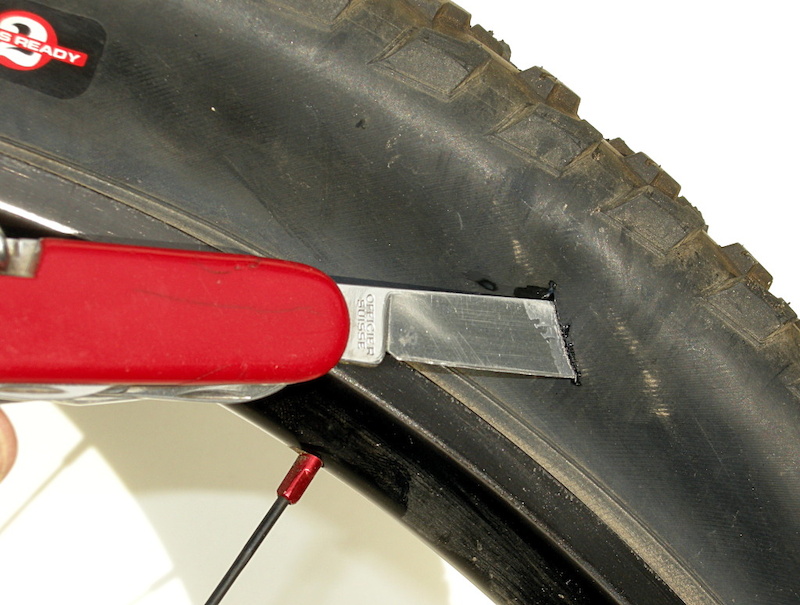
Of course, something still has to typically hit your sidewall for it to crack in this instance.
Finally, hitting curbs and similar obstacles at high speeds can also cause sidewall damage. In most cases, the damage starts minor and then becomes worse as you drive around.
Typically, a simple examination will let you know if your sidewall is damaged. Cracks and punctures are pretty easy to see with the naked eye, even if you aren’t a trained expert.
With that said, indents are typically standard and shouldn’t affect performance. These indents are caused by the fabric cords that cover the inside of the sidewall. Where these cords intersect, there may be a slight indent.
Again, this is normal and nothing to worry about.
On the other hand, bulges and bubbles are a sign of underlying cord damage. Sadly, this sort of damage cannot be repaired. Therefore, you must replace the whole tire – preferably as quickly as possible.
Significantly, you should never drive on a tire with potential sidewall damage. In many cases, this damage is highly prone to bursting, as sidewalls are not very strong.
Under most definitions, the sidewall of a tire is the side of the tire, as you might guess from the name. Pretty easy to remember.
In actuality, the sidewall doesn’t do much. Its primary purpose is to protect the cord body on the inside.
Furthermore, meaningful information about the tire is often also printed onto the sidewall. Usually, this information includes the tire’s size, load capabilities, and speed rating.
Because sidewalls are exposed to the sun and elements more, they are often explicitly designed to withstand ozone and UV light.
With that said, sidewalls lack the steel cables that are underneath the thread. Therefore, they are not as durable or repairable after being damaged. Once their integrity is breached, they are pretty susceptible to blowouts.
In some cases, sidewall damage is covered under warranty. However, you need to check with your tire manufacturer and the specific warranty covering the tire. In many cases, there are many stipulations to the warranty.
For instance, damage that is caused by the workmanship and material problems are often covered. However, if you hit something and damaged your sidewall, it wouldn’t be.
In other words, tire warranties often don’t cover things you did to the tire – only problems caused by apparent defects.
Therefore, if the sidewall just randomly breaks, it may qualify for a replacement under warranty. But if you hit something with the tire, it wouldn’t be.
In many cases, you have to prove that it’s a defect, which can be challenging to do in many cases.
However, many warranties also don’t cover damage caused by “misuse.” As you might imagine, what counts as misuse varies. Many warranties will outline things you can’t do with the tire without voiding the warranty.
Furthermore, just like with all warranties, tire warranties eventually expire. Usually, this occurs when the tire is six years old or worn past a certain tread level. After this point, the tire is considered old and should be replaced.
After this point, damages that occur to the sidewall won’t be covered. The company doesn’t expect the tire to last longer than six years.
Sometimes, you can purchase separate “road hazard” warranties. Simply put, these warranties cover your tires if you run over something that causes a puncture. Usually, the warranty covers the repair, or a new tire should the repair not be possible.
Of course, this warranty would cover your sidewall if it became punctured. However, punctures are pretty rare on sidewalls since they don’t touch the road.
Cracks are a sign that your tire’s sidewall has become compromised. Therefore, it is a sure sign that the tire needs to be replaced. While many things may cause the sidewall to crack, none of them are good.
For instance, direct damage can cause cracks, such as hitting a curb. At the same time, old tires may simply crack due to wear and tear. Sometimes, UV light can even cause unused tires to crack.
Unlike punctures, cracked sidewalls cannot be repaired safely. With that said, there are some repairs available online and some professionals willing to give it a try.
However, it is often not the best idea, as damaged sidewalls have severely limited integrity. Without the steel cables that the treads have, sidewalls have a tough time staying together, even after being repaired.
In other words, sidewall repairs can come undone at any point, leading to blowouts.
Plus, air can easily escape through the cracks in a tire, leading to flat tires before you know it. Even great repair jobs often can’t stop these leaks.
If you are looking to learn more, you might also be interested in reading up on if you can get a flat tire from hitting a curb, tire feathering, and blown-out tires.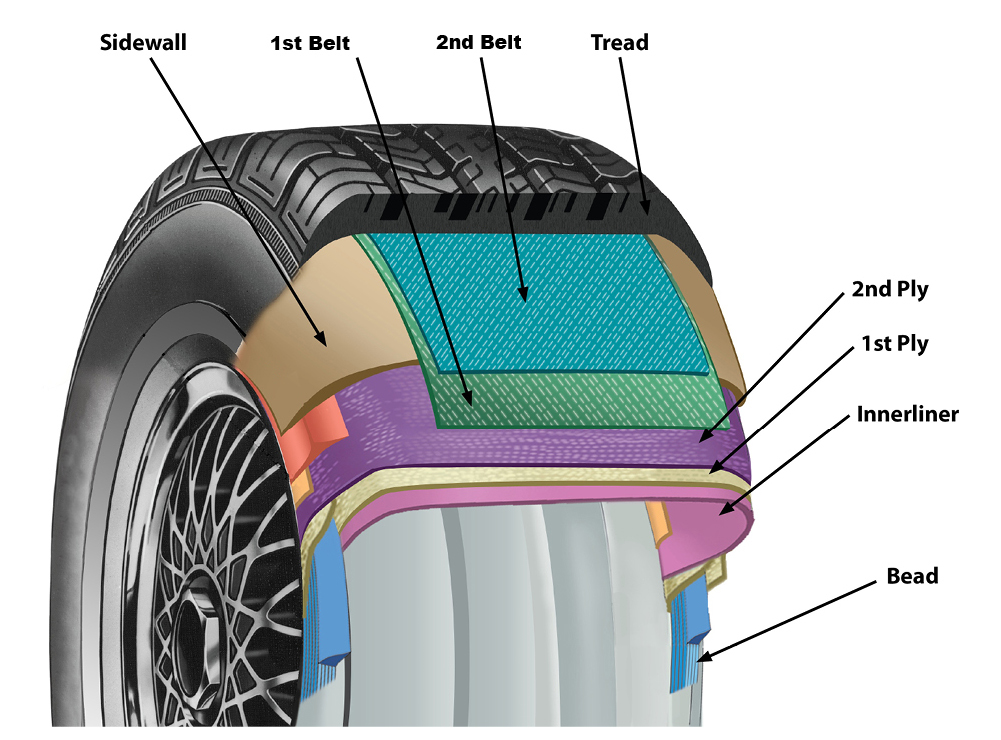
Sidewall damage can occur for a variety of different reasons, ranging from accidents to aging. Sadly, no matter what caused the damage, sidewalls cannot be repaired with patches like other parts of the tire.
Furthermore, even minor damage can become worse while you’re driving. Sometimes, this damage can lead to random blowouts, endangering you and other drivers.
For this reason, any tire with sidewall damage should be quickly replaced.
KrasnodarArmavirGelendzhikTuapseSochiNovorossiyskBelorechenskMaikopRostov-on-DonSimferopolStavropolAstrakhanst. Kanevskaya station Vyselkist Dinskaya Volgograd Voronezh
TSC No. 13 pos. Verkhnebakansky, st. Bakanskaya, 8A
+7 (928) 331-07-76
Around the clock
TSC No. 29, Volgograd, 30th Anniversary of Victory Blvd., 9
+7 (937) 088-44-27
Mon-Fri from 09.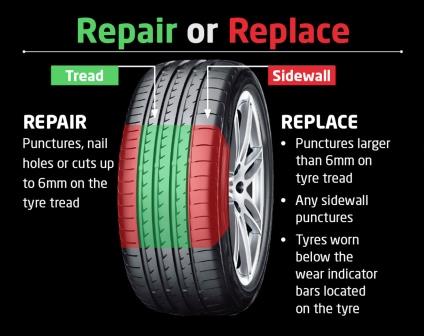 00 to 20.00, Sat from 9.00 to 19.00, Sun from 10.00 to 18.00
00 to 20.00, Sat from 9.00 to 19.00, Sun from 10.00 to 18.00
TSC No. 28, Rostov-on-Don, st. Dovatora, 159
+ 7 (988) 997-61-11
Mon-Fri from 09.00 to 20.00, Sat from 9.00 to 19.00, Sun from 10.00 to 18.00
TSC No. 18, Krasnodar, Berezovy village, Karl Gusnik st., 17
+ 7 (938) 538-53-11
Mon-Fri 9:00 - 20:00; Sat 9:00 - 19:00; Sun 10:00 - 18:00
TSC No. 27, Sochi, Batumi Highway 94/20
+7 (928) 272-72-55
Mon-Fri from 09.00 to 20.00, Sat from 9.00 to 19.00, Sun from 10.00 to 18.00
TSC-26 Voronezh, st. Volgogradskaya 30
+7 (930) 406-78-84
Mon-Fri from 9.00 to 18.00
TSC No. 25, Volgograd, Bureyskaya st., 8
8 (937) 088-42-78
Mon-Fri from 9.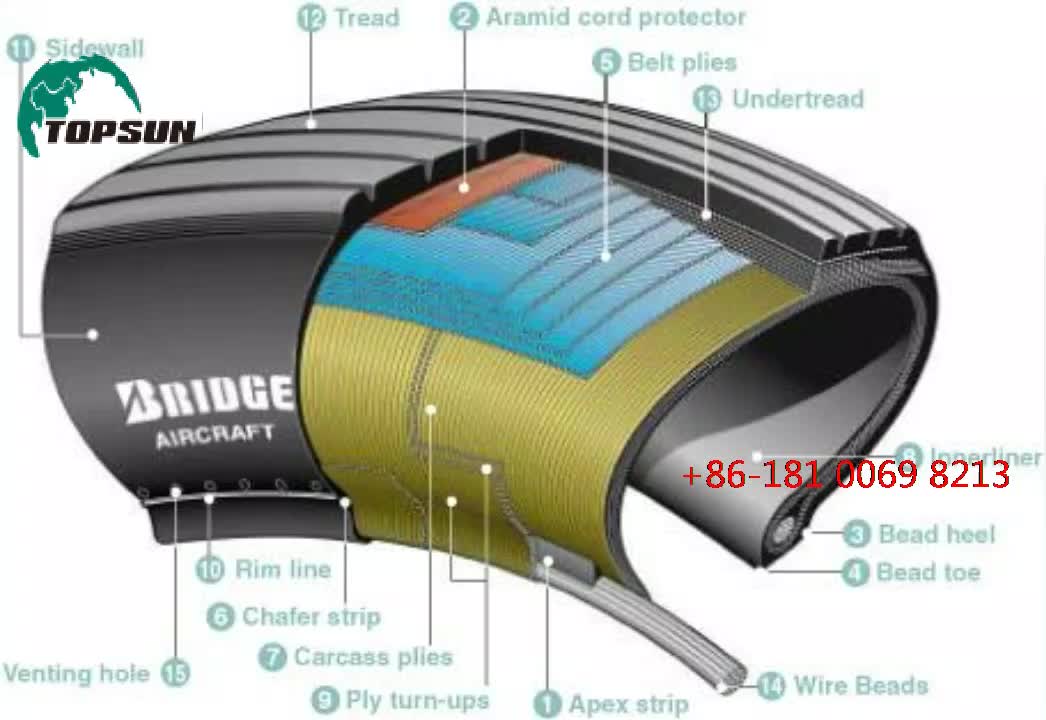 00 to 18.00
00 to 18.00
TSC No. 22, Stavropol, ave. Kulakova, 18
+7 (938) 517-77-03
Mon-Fri from 9.00 to 18.00
TSC №21 Armavir, Efremova 319
+7 (918) 322-76-38
Mon-Fri from 09.00 to 20.00, Sat from 9.00 to 19.00, Sun from 10.00 to 18.00
TSC No. 19, Krasnodar, st. Selezneva 197/5
+7 (989) 169-34-16
Mon-Fri 9:00 - 20:00; Sat 9:00 - 19:00; Sun 10:00 - 18:00
TSC No. 17 Astrakhan, 1st passage Rozhdestvensky 11a
+7 (988) 172-66-88
Mon-Fri from 9.00 to 18.00 Sat-Sun day off
TSC No. 16, Rostov-on-Don, st. Dovatora, 154/5
+7 (989) 527-11-86
Mon-Fri from 9.00 to 18.00 Sat-Sun day off
TSC No. 15 st. Vyselki st. Luneva, 29a
15 st. Vyselki st. Luneva, 29a
+7 (918) 199-67-89
Mon-Fri from 9.00 to 18.00, Sat from 10.00 to 15.00, Sun from 10.00 to 15.00
TSC No. 14 Crimea, Simferopol, 11 km. Moscow highway
+7 (938) 517-77-82
Mon-Fri from 9.00 to 18.00 Sat, from 10.00 to 15.00, Sun closed
TSC No. 12, Gelendzhik, st. Lunacharskogo, 310A
+7 (918) 027-88-99
Mon-Fri from 09.00 to 20.00, Sat from 9.00 to 19.00, Sun from 10.00 to 18.00
TSC No. 11 st. Kanevskaya, st. Sverdlikova, 277d
+7 (988) 312-97-70
Mon-Fri from 09.00 to 20.00, Sat from 9.00 to 19.00, Sun from 10.00 to 18.00
TSC No. 10, Krasnodar, st. Russian, 339
+7 (989) 298-90-17
Mon-Fri 9:00 - 20:00; Sat 9:00 - 19:00; Sun 10:00 - 18:00
TSC No. 9, Tuapse, p. Kroyanskoe, st. Solnechnaya, 1B
9, Tuapse, p. Kroyanskoe, st. Solnechnaya, 1B
+7 (918) 060-47-17
Mon-Fri 9:00 - 20:00; Sat 9:00 - 19:00; Sun 10:00 - 18:00
TSC No. 8, Krasnodar, st. Stavropolskaya, 214/5
+7 (918) 060-47-08
Mon-Fri 9:00 - 20:00; Sat 9:00 - 19:00; Sun 10:00 - 18:00
TSC No. 7, Krasnodar, st. Dinskaya, Federal highway M4 1308 km, 3
+7 (918) 060-47-07
Around the clock
TSC No. 6, Belorechensk, st. May Day, 122
+7 (988) 369-96-37
Mon-Fri from 09.00 to 20.00, Sat from 9.00 to 19.00, Sun from 10.00 to 18.00
TSC No. 5 Maykop, st. Hakurate, 555
+7 (918) 060-47-05
Mon-Fri 9:00 - 20:00; Sat 9:00 - 19:00; Sun 10:00 - 18:00
TSC No. 4, Krasnodar, Turgenevskoe shosse, 6
4, Krasnodar, Turgenevskoe shosse, 6
+7 (918) 060-47-13
Mon-Fri 9:00 - 20:00; Sat 9:00 - 19:00; Sun 10:00 - 18:00
TSC No. 3 Krasnodar, Babushkina street, 233
+ 7 (918) 060-47-03, + 7 (918) 060-47-03
Mon-Fri 9:00 - 20:00; Sat 9:00 - 19:00; Sun 10:00 - 18:00
TSC No. 2, Krasnodar, st. Dzerzhinsky 98/7
+7 (918) 060-47-02
Mon-Fri 9:00 - 20:00; Sat 9:00 - 19:00; Sun 10:00 - 18:00
TSC No. 20, Krasnodar, Sormovskaya st., 75
+7 (989) 839-98-20
Mon-Fri 9:00 - 20:00; Sat 9:00 - 19:00; Sun 10:00 - 18:00
Category: Operation and maintenance
Article reading time: 5 minutes
Bookmark this
A car tire has a complex structure and a specific rubber compound that protects the tire from impacts and retains its shape under high loads.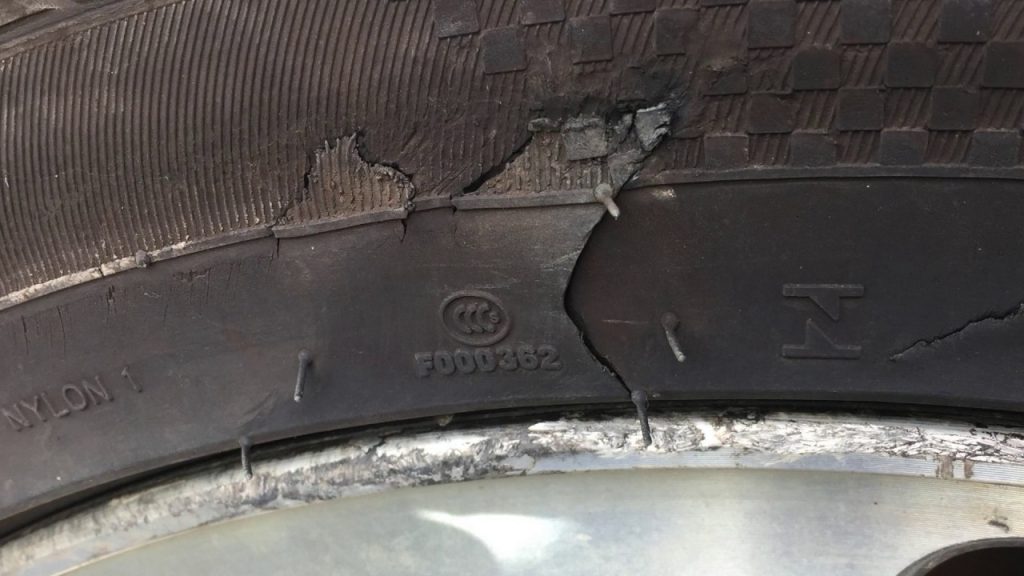 The design of the wheel consists of several strength frames - metal wire and nylon thread, they keep the rubber on the trajectory during intense and dangerous driving.
The design of the wheel consists of several strength frames - metal wire and nylon thread, they keep the rubber on the trajectory during intense and dangerous driving.
Damage of any kind can result in negative consequences that affect driving safety and road safety. And if the majority of punctures can be repaired in the service or repaired by oneself, then the side cut of the tire often forces one to resort to a complete tire replacement. Riding on damaged tires in the usual mode is extremely dangerous. How to fix a tire so that you can ride comfortably without consequences, and is it possible to seal or repair a cut tire? We will answer these and other relevant questions for motorists in this material.
Modern service centers can repair a tire after a front or side puncture. You can repair a tire, thanks to the universal set of a motorist, with your own hands. It is enough to seal the hole with a special tourniquet.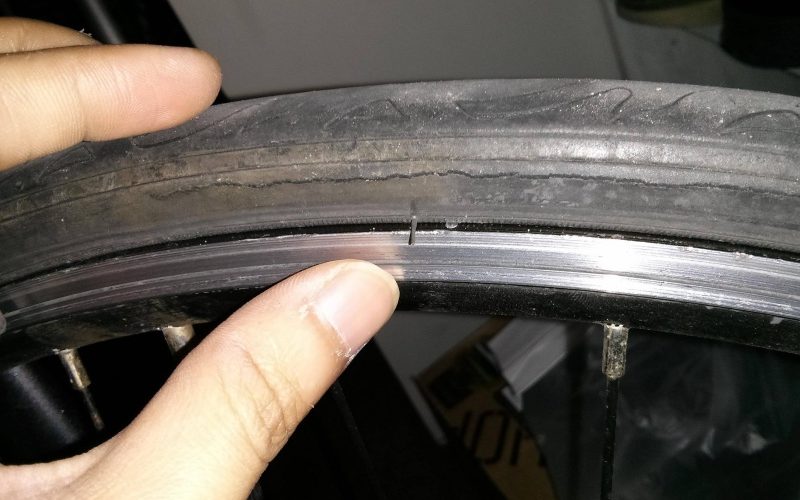
Is this type of damage dangerous and should it be replaced? Only the master can unambiguously answer the question, having studied the lateral damage. The specialist will determine the nature of the puncture that needs to be repaired and offer a complete tire replacement or repair. It is inexpedient and dangerous to close up a large puncture, due to which the tire is deformed.
To determine how to close a side cut, you need to study the type of damage:
Sealing a cut on a tire is much more difficult than a normal repair, so it is often necessary to perform an involuntary replacement of tires. Repairing the wheel is impossible due to side wires and threads that break under side load. Taping and repairing lateral damage will not help repair the threads. Any obstacle or potential contact with a bump at high speed will have the adverse effect of bursting the tire due to the load, resulting in a dangerous loss of control.
Taping and repairing lateral damage will not help repair the threads. Any obstacle or potential contact with a bump at high speed will have the adverse effect of bursting the tire due to the load, resulting in a dangerous loss of control.
A side puncture is less dangerous than a longitudinal cut. However, not every defect requires replacement. Masters will be able to repair tires if the deformed area placed along the carcass threads does not exceed 50 mm. The possibility of repair is also available if the side cut located across the tire threads is less than 30 mm. However, we do not recommend doing repairs in this case with your own hands. To preserve the protective properties and avoid possible negative consequences, it is necessary to use professional equipment.
Should cuts be repaired? A popular question for motorists who are faced with a choice is whether to seal a defect or replace a wheel. The possible consequences of cuts scare car owners, but do-it-yourself repairs are more attractive because they are cheaper than buying fresh tires.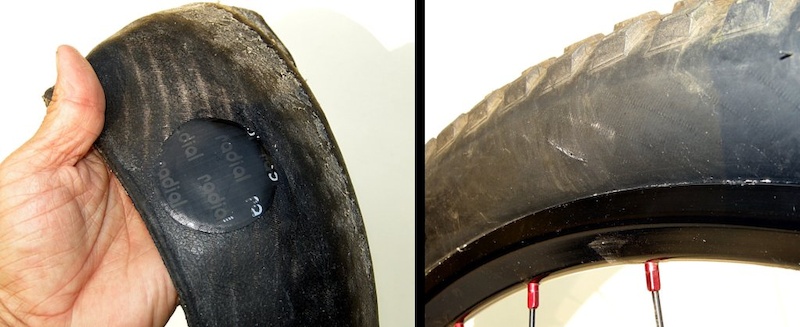
To avoid dangerous consequences, sealing small and large side cuts is prohibited if more than 10 cords are to be repaired and a hole larger than 30 mm is to be patched. It is possible to repair tires for passenger cars with a side cut of the tire if it is a shallow scratch.
Driving with a cut in a tire is not safe. The degree of risk depends on the nature of the damage and the experience of the specialist who will seal the seam. Before sealing the hole with your own hands or entrusting a restoration to a specialist, you should examine the lateral damage. Manufacturers recommend replacing tires if it is necessary to seal 20 mm or more. However, if it is possible to change a wheel, the opportunity should be taken as soon as possible. Since even a small defect is dangerous during the trip. During operation, a hernia is formed, which explodes if timely replacement is not made. If you drive on a tire with a side cut for a long time and do not do repairs in the service or with your own hands, there is a high risk of getting into an accident.
In order to strengthen the structure of tires, manufacturers add several layers of metal cord to models. Also on the market there is a fabric cord, which includes fibers from nylon, which allows you to increase the strength of rubber. Therefore, in order to seal the tire in the service or repair it yourself in case of a puncture, it is necessary to use high-quality materials. If the recommendations for replacement are not followed, there is a high risk of dangerous and unpredictable consequences.
Winter Drive protection
Tires Goodyear UltraGrip Arctic 2 SUV
Winter Drive Protection Sound Comfort
Rating:
4.5
Tires Goodyear UltraGrip Ice 2
Winter Drive protection
Tires Goodyear UltraGrip Performance+ SUV
Winter Drive protection
Tires Goodyear UltraGrip Arctic 2
Winter Drive Protection Run On Flat Sound Comfort
Tires Goodyear UltraGrip Performance+
To accurately assess the effects of tire deformation, before repairing a tire, contact a specialized center. The masters will figure out whether it is possible to continue driving a car or whether it is worth replacing the rubber. The main inspection criterion is the width of the seam that needs to be repaired. It should be borne in mind that it is dangerous to close up and seal holes with a width of more than 40 mm with rubber mixtures.
The masters will figure out whether it is possible to continue driving a car or whether it is worth replacing the rubber. The main inspection criterion is the width of the seam that needs to be repaired. It should be borne in mind that it is dangerous to close up and seal holes with a width of more than 40 mm with rubber mixtures.
If the masters decide to restore the tire and make a patch, then the restoration process includes the following steps:
